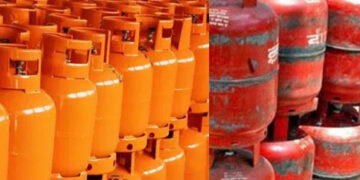Because the alcohol content in one standard drink varies among different countries (ranging from 8 g to 14 g), we chose the Canadian standard for an alcoholic beverage, which is 14 g of pure alcohol (CCSA). Accordingly, we considered up to 14 g of alcohol as a low dose of alcohol. To differentiate between medium and high doses, the Canadian Centre on Substance Use and Addiction (CCSA) identifies less than 30 g of alcohol for men and less than 20 g of alcohol for women as the threshold for low risk of alcohol intake (CCSA). Thus, in our review, we used up to 30 g alcohol intake for men and up to 20 g alcohol intake for women as a moderate dose, and above this limit as a high dose. In studies where sex‐specific results were not provided, we categorised dose based on the dominating sex in terms of study participation.
Lee 2002 published data only
Other foods including grapes, blueberries and strawberries provide the same antioxidants without https://ecosoberhouse.com/ the negative effects of alcohol. However, alcohol can also temporarily increase your heart rate or cause heart palpitations. The number of units in a drink is based on its size and how strong it is, measured as ABV (alcohol by volume).
Assessment of reporting biases

Researchers were unable to study in-depth the relationship between age, blood pressure, and alcohol intake. There were risks for misclassifications, and it is possible that some participants changed alcohol consumption amounts during the follow-up time. The study also didn’t look at how different types of alcohol influenced blood pressure.
Bau 2005 published data only
Many cellular events, such as intrinsic myocyte dysfunction, characterized by changes in calcium homeostasis and regulation and decreased myofilament sensitivity, can come about due to oxidative stress. Mechanisms related to the positive and adverse effects of alcohol on cardiovascular conditions, such as coronary heart disease and stroke as well as cardiomyopathy. Different mechanisms may be in effect depending on the dose, duration, and pattern of alcohol consumption. Several reports indicate that alcohol first exerts a seemingly positive effect, followed by a more negative impact (i.e., it is biphasic) on the endothelial–nitric oxide–generating system. Endothelial dysfunction is an early indicator of blood vessel damage and atherosclerosis, as well as a strong prognostic factor for future CV events (Deanfield et al. 2007; Ras et al. 2013).
- Several factors are to blame, one being your body’s network of blood vessels, which changes with age.
- The Centers for Disease Control and Prevention defines light drinking as three drinks or fewer per week and moderate drinking as no more than one drink per day for women and up to two per day for men.
- Researchers looked at data from over 19,500 participants, allowing for vast information collection.
- When alcohol affects blood pressure alcohol, you may notice changes in your mm Hg (millimeters of mercury) readings, especially in the top number (systolic pressure).

These data highlight how gender may be an important modifier of the alcohol threshold level and can shape the alcohol benefit–risk relationship. The way in which alcohol consumption has been measured and categorized varies, sometimes making it challenging to compare data among studies. More studies today report alcohol consumption in terms of either “drinks” or grams/units of ethanol per day or week, and alcohol consumption is measured by self-report. Most investigators also define the amount of alcohol that constitutes a “standard” drink as 12 to 15 g (with only slight variation).
Rosito 1999 reported the effects of 15, 30, and 60 g of alcohol compared to placebo on healthy male volunteers. According to our pre‐specified dose categories, both 15 g and 30 g of alcohol fell under the medium dose category. Including both of these doses or de‐selecting either one of these doses from Rosito 1999 from Analysis 2.1 and Analysis 2.2 (medium doses of alcohol) resulted in the same statistically significant conclusion.
Oxidative Stress
For high‐dose alcohol studies, we did not find any significant difference between blinded and unblinded studies. Altered platelet responses (e.g., increased platelet activation/aggregation) leads to blood-clot formation (or thrombosis) in certain CV conditions. Anticlotting therapies are therefore the cornerstone of managing acute coronary syndromes. Not surprisingly, alcohol consumption has complex and varying effects on platelet function.
Contact with corresponding authors.
If you or a loved one is struggling with alcohol addiction, it is essential to seek help and support. Various resources are available, including support groups, counselling services, and treatment programmes. Don’t hesitate to reach out to our healthcare professionals to start the journey towards recovery. If you’re generally healthy and under 40 years old, you should have your blood pressure checked every two to five years. If you’re 40 or older, get it checked annually, because the risk for high blood pressure increases with age, according does alcohol cause high blood pressure to the Mayo Clinic. You may need more frequent checks if you have a chronic health condition like heart disease or diabetes.
High blood pressure, or hypertension, is a leading cause of heart attack, stroke, and other cardiovascular diseases, and the relationship between blood pressure and alcohol consumption is a key factor to consider. Whether you drink alcohol occasionally, regularly, or engage in binge drinking, understanding the impact of blood pressure alcohol levels is critical for your overall health. Another reason behind the heterogeneity was probably the variation in alcohol intake duration and in the timing of measurement of outcomes across the included heroin addiction studies. Most studies gave participants 15 to 30 minutes to finish their drinks, started measuring outcomes sometime after that, and continued taking measurements for a certain period, but there were some exceptions.
style=”display:none;”>





















































